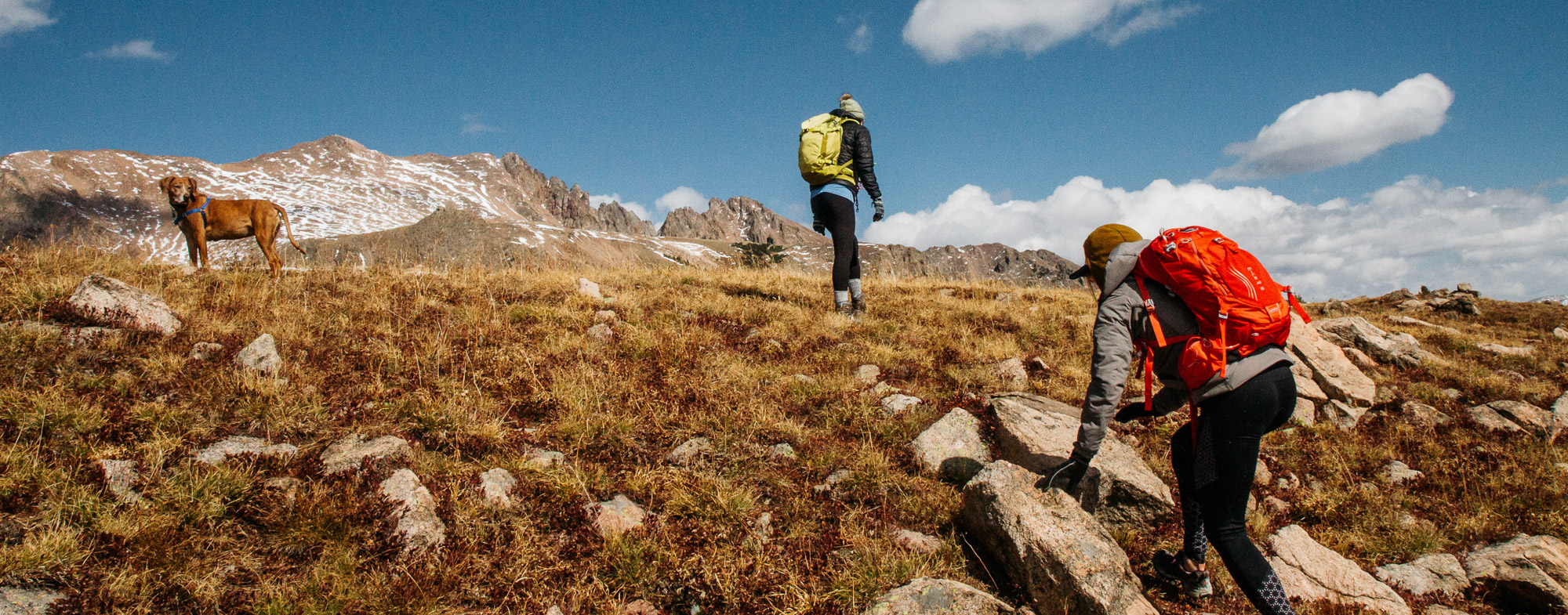Preparing to Hike the Appalachian Trail
I can’t remember when I officially decided that I had to hike the Appalachian Trail. I mulled it over in my head for a long time before it was feasible for me to begin. I dreamt about it vividly. Following white blazes on trees all the way from Georgia to Maine and wanting to tackle the whole thing. I was in search of a great American hiking adventure.
In 2016, I finished the trail as a four-summer section hiker. It was damned hard, but you’re reading this on SOFLETE, so I assume you’re familiar with the challenging and the difficult. That's a good thing because if you to really want hike the entire Appalachian Trail, you are going to need every bit of your toughness and resolve.
Rather than just diving in, there are a myriad of ways you can prepare to increase your chances of becoming a "completer."
Learn What You Need to Know
There are many great books available that tell a Trail story, teaching you about the ins and outs of the Trail and informing you what you might encounter along your journey. These stories include descriptions of the good, the bad, and the stupendous.
In the few years it took me to be free enough to get out there, I ended up with a couple of shelves of Appalachian Trail books. I scoured the whiteblaze.net, which is full of all kinds of opinions from experienced hikers. Some of it was crap, but I dug deep, read deep, and learned all kinds of useful things from seasoned hikers.
Beyond Whiteblaze, there are tons of other blogs out there that will fit your particular hiker profile. Two indispensable sources I used over and over again were the book AWOL on the Appalachian Trail and the Guthook app.
With all of the information you need to survive on the trail and get into town when you have to, there is no more important book on the Appalachian Trail than AWOL. Once you get your hands on a copy, you can forget about buying trail maps and heavy trail guides. Armed with this book, you won’t need them.
On a super-cold and blindingly foggy day at Mt. Washington, my hiking partner and I used Guthook to find the trail after getting a bit off track. We spent forty-five minutes searching and would never have gotten back on track without Guthook that day. Using satellite technology to pin your position on the mountains and trails, Guthook is an invaluable resource that could save your behind on more than one occasion. It’s not cheap but it is what I would consider standard gear. It is also very helpful if you have a compass and know how to use one.

Be Honest About Your Commitment and Your Current Level of Fitness
The best way to get in shape to undertake the Trail is to start preparing your posterior chain and feet. You can start with SOFLETE Back Country which will enhance unilateral movement and eventually work to hiking with with a loaded pack without a high risk of injury. Old timers think the only thing that can approximate the climbing you will do is doing it, but there are better ways to improve your durability, endurance, and strength without breaking your body.
This isn't a sprint. You may have the will to succeed, but without adequate fitness your mindset will be doubly tested as your body breaks down. I know that blisters, twisted ankles, and muscle soreness were distractions that had a much larger impact on my psychology than adverse weather and slower than expected progress.
Don’t Even Plan on Bailing
The trail gets harder before it gets easier. But as you get stronger, it does get more manageable. Just stay out there. If you have three days of cold rain and big new blisters, you may be tempted to get off the trail and give up. Sleep on it. Chances are, the next day you’ll be ready to keep hiking. Preparing for these eventualities will also make it easier to accept them.
What people often forget about a challenge as big as hiking the Appalachian Trail is that it’s supposed to be fun. Yes, it’s tough. Sure, a lot of people don’t finish. But while you’re doing it, you have fun. Pushing through, leaning in, sticking to it and astonishing your tired self is pretty damned exhilarating.
Manage Your Expectations
You may not hike the miles you first thought you would. You may find some of the people on the Trail to not be your type. You will struggle to eat enough calories to fuel your miles. Not every day is a great hiking day, but most days are beautiful and rewarding enough to make it all worth it though.
Understand Gratitude
Look around you while you hike. You are living in the woods. Be grateful for the opportunity. Don’t bitch about the little inconveniences. There is so much time to breathe and think out there. Spending time in the trees and with yourself is a serious gift, so enjoy it.
These kinds of adventures test your body along with your resolve. Over time, both grow stronger and more responsive. Remember that not everyone has this opportunity. Your muscles develop strength to climb up tiring hills and craggy mountains to stunning cliffs over unbelievable panoramas. I know when I am really old I’ll be so happy I made the trip. I can close my eyes right now and conure up a sense of the pine needles I slept on one cold rainy night in Tennessee. The memory is so strong their scent still lingers in my nostrils.
Expect Rain, Cold and No Small Amount of Physical Misery
Just accept it. One of the most common sayings along the Northern stretch of the trail is “No rain, no Maine.”
It is essential to have gear you can layer to keep from becoming chilled when things get wet. Wool is terrific because it does not absorb body smells. Technical fabrics are great, too. Go to stores and try on their rain gear. Read blogs and websites to see how successful hikers manage this particular kind of trail misery. There is a delicate balance between overpacking and being under prepared... trust others who have been there before you.
Use the Lightest Gear You Can Find
Research gear like a crazy person. Find independent tent makers, pack companies and innovators who are using lightweight materials. Keep your “Big 3” (backpack, shelter, and sleeping gear) under six pounds. There are many recommendations for total pack weight, many of which take into account your age, weight and fitness level. I always kept my pack weight at twenty-seven pounds, which included three days of food and enough water for three hours of exertion. As a middle-aged woman, pack weight was important to my stamina.

Strong and experienced hikers often achieve much lower pack weight. I have seen thru-hikers who get their pack weight down to seventeen pounds! You may be a beast who works out all the time and can bench over 300 pounds, but backpack weight begins to gnaw at you no matter how much you can lift.
You can reduce the weight considerations by utilizing tricks like front loading water consumption before you break camp and making a point to consume water more liberally at any points where you would conduct a water resupply. Limiting the total volume of water you carry and uitlizing water purification more regularly will help keep you lighter on your feet. Also, by carrying more dehydrated foods you can reduce the total weight of your caloric requirements.
Do not bring stuff you think you need, including items that experienced hikers on blogs and in books explicitly recommend you leave home. Believe them when they say you do not need an ax. You will not be making campfires. You will be going to bed most every night as soon as you eat. “Hiker Midnight” is when darkness falls and when most people hit the sack. This is not to say that no one is having any fun out there. There are all kinds of crazy, fun, celebrating, people you’re sure to meet on the Trail they just tend to have their fun during more natural hours than most of us in civilization.
Make Your Gear Multipurpose
Being thoughtful about everything you place in your pack helps you trim your pack weight. Do not bring a multi-tool if you are also bringing a pocket knife. A large trash compactor bag becomes your pack cover for rainy nights, can be used as a place to sit on the trail so you avoid chiggers and spider bites, and a place to put your soaking boots inside your tent at night. Your change of clothes is your pillow. Rain gear is for rain and doubles as spare clothes when you are in town for laundry.
Hike Your Own Hike
Are you a night owl? Then join the people who tackle the Trail during the night, it reduces your water consumption and can be pretty exciting if you can read a map at night. If you are a morning person, then get up at four and take off before the rest of the world is stirring. Do what fits you. If you like hiking big miles then find hiking partners who do, too. If twelve miles a day feels right for you then it is right. It is your adventure. Do not let a group of pals dictate your hike.
A Trip Like No Other
There truly is nothing like hiking the Appalachian Trail, seeing the Eastern United States mile by mile, traveling under your own steam. There is so much time for thinking and unwinding from our super-highway regular lives out on the trail. An entire long-distance hiking culture awaits you.
Like all cultures of which you have been a part, there are crosses to bear, but they are far outweighed by the things that light you up and make you glad you joined this crazy band of boot-wearing, shelter-sleeping, and forest-breathing folks.
Trish Harris is professor and hiker living in North Carolina. Her list of planned treks includes the Pyrenees, The John Muir Trail, the Khumbu Icefall, the North Rim, the Compestela in northern Spain, the GR20. Just back from the Tour de Mont Blanc, she will be doing “trail magic” in April for northbound AT hikers.





